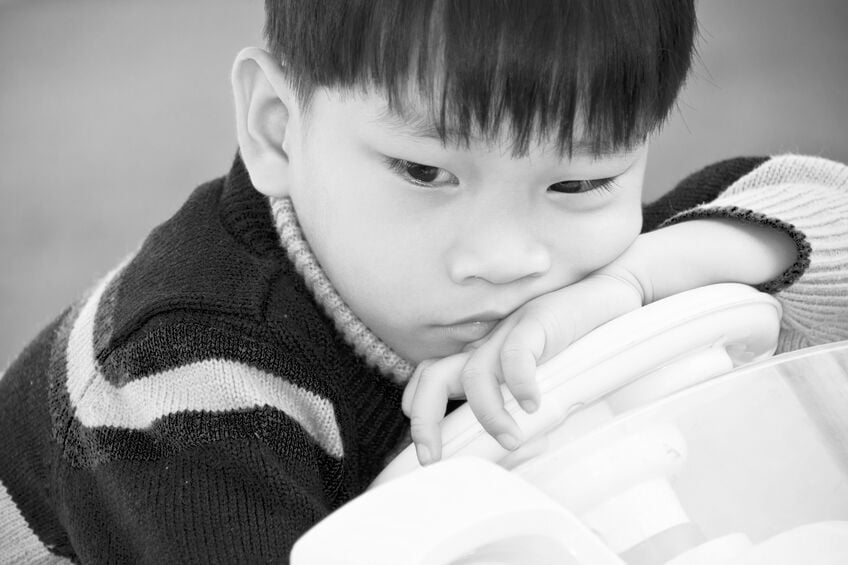
Welcome back to the second of our 4-part series focusing on helping young children unpack their backpacks that are overflowing with emotions, both big and little, and how we can help in the process.
Last time, we talked about how helping children to identify their feelings can lessen the weight of the emotional backpacks they carry with them each and every day.
Let’s continue to help them unpack these backpacks to make it easier for them to navigate their world.
"I don’t understand what caused me to feel this way…no one understands me."
This is an all-too-relatable feeling for us all, but especially for children. Sitting with emotions we do not understand can feel isolating, and can make it difficult to communicate our feelings and needs.
After support children in recognizing and identifying their emotions, the next step is to support them in understanding those emotions.
Understanding not only the differences between emotions, but that individuals experience emotions in different ways is critical for children to be able to understand their own emotions and the emotions of others.
As educators, we can help children do this by connecting their emotions to a cause, and by helping them to accurately differentiate between emotions.

Remember our friend Annie? If you already remember Annie and how to identify emotions, and recognize the physiological signs, feel free to skip ahead. If you need a refresher, or you want a deeper understanding, read below. ⬇️
Annie was a child in our class who often had difficulty with recognizing and identifying her emotions - she would cry, scream, and do just about anything to avoid discussing what she was feeling.
By being responsive and nurturing, and by modeling and guiding through labeling our own emotions, Annie began to openly share hers.
Let's look at another step in her journey towards becoming the boss of her emotions.
One day, Annie was navigating a prickly situation that many children experience as social relationships grow and change— feeling excluded from playing with her friends.
Instead of asking to join, Annie chose to sit in our classroom’s CalmDown Corner sadly, moving her picture to “sad” on Our Emotions Board and hoping for friends to ask her to play.
Upon initially asking Annie what was making her feel sad, she looked down at her shoes and shrugged her shoulders. We could tell Annie was having difficulty communicating that she was feeling sad because her friends weren’t letting her play in their game.
We knew we had to help Annie better understand her own feelings, so she could in turn help her friends to understand that she was feeling sad and left out and try to solve this problem.
We sat down with Annie and helped her piece together what happened to cause these feelings, and from there we were able to make a plan. Let’s take a look at how we worked through this with Annie as we closely explore two important steps for educators.
When guiding children to understand their own feelings and the feelings of others, here are some important things to keep in mind:
A key component to emotional understanding is being able to discern emotions accurately.
Even adults can mix up feelings like anger and sadness, as they can look, feel, and be communicated similarly.
😡 Anger happens when you get something you do not want, like when a friend knocks over a tower you spent a lot of time building.

😢 Sadness happens when you do not get something you do want, like Annie wanting to play with her friends and being told, “you can’t play with us.”
Children need guidance in accurately identifying their feelings, but be careful. Mislabeling emotions (e.g., “You must be feeling angry”) can cause greater confusion.
Narrate your observations while also guiding children to identify their own feelings with visual tools, like Our Emotions Board.
With Annie, we already knew what she was feeling.
She took a big step by showing us her feelings of sadness on Our Emotions Board, and now it was time for us to dig deeper, by helping her understand why she was feeling this way.
.png?quality=low&width=1080&height=1080&name=tip%201%20model%20the%20behavior%20you%20want%20to%20see%20(2).png)
An important piece of emotional understanding is being able to anchor our feelings to a cause. For young children (and even adults), asking “Why are you feeling this way?” can be more distressing than helpful, as it is abstract and doesn’t offer concrete information to process.
Instead ask: “What happened to make you feel this way?”
Even with this seemingly small language adjustment, you are highlighting a cause and effect relationship for children to begin processing and understanding their feelings — a connection to something concrete like a person, object, or event that caused their feelings to arise.
When we asked Annie, “What happened to make you feel sad?” she shrugged her shoulders. Sometimes, children require additional support and nurturing to discuss the big feelings they are experiencing and the big causes of those feelings.
As teachers, observing social dynamics in the classroom can be critical to support emotional understanding during moments like these. We had witnessed the situation unfold as the children played, so we already had a clue as to what the problem was and used this to help Annie connect her feelings to a cause.
“Are you wanting to play with your friends?” we asked. Immediately, Annie nodded and her frown slowly started to fade. “Yes, but they won’t let me play with them,” she said sadly.
Next, it was our job to show understanding of Annie’s emotional experience and support her in thinking of solutions for how to feel better.
With our support, Annie found the words to let her friends know what she was feeling, and that she wanted to play their game too. She even suggested a new way to extend the game to include everyone. We watched proudly as Annie paused before joining the game to move her picture on Our Emotions Board from sad to happy.
This strengthens understanding, supports their development of empathy and prosocial behavior, and gets them that much closer to being able to appropriately communicate and manage their feelings.
That’s one more thing we can take out of their backpack.
These Posts on Emotional Intelligence
Housman Institute, LLC
831 Beacon Street, Suite 407
Newton, MA 02459
info@housmaninstitute.org
(508)379-3012
Explore
Our Products
Legal
Connect
Contact
Join our Mailing List!
Subscribe to receive our newsletter, latest blogs, and ECSEL resources.
We respect and value your privacy.
Comments (1)